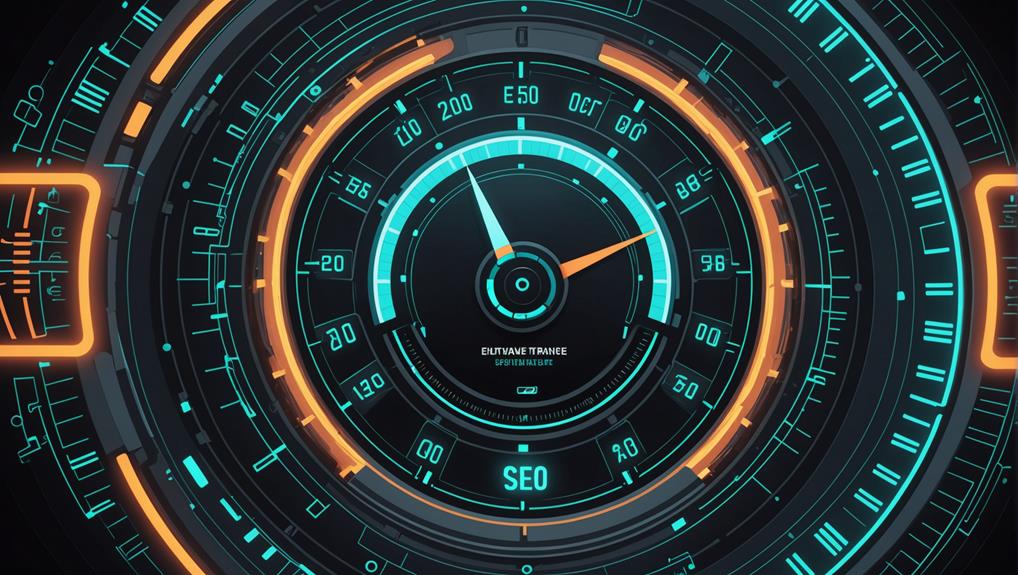You've probably noticed how a slow website can be frustrating and lead to lost visitors. It's time to consider site speed not just as a technical aspect but as a pivotal factor for SEO success. With Google ranking faster sites higher, speeding up your site can directly influence your organic traffic. But where do you start? Techniques like image optimization and browser caching can make a difference, yet there's more to explore. What's the secret to significantly boosting your site's performance and keeping those visitors engaged? The answer lies in a combination of strategies that might surprise you.
Image Optimization Techniques
When it comes to boosting your site's speed, image optimization is often a crucial strategy. By implementing lossless compression, you can reduce the file size of your images without sacrificing quality. This approach ensures that your site loads faster, providing a better user experience and enhancing SEO performance.
You should also consider using responsive images, which adapt to the user's device and screen size, ensuring that only the necessary image size is loaded. This practice not only speeds up load times but also enhances mobile usability.
Incorporating lazy loading is another effective method. By delaying the loading of images until they're about to enter the viewport, you can significantly reduce initial page load time. This technique is particularly beneficial for pages with numerous images, as it prioritizes the loading of above-the-fold content, keeping users engaged.
Selecting the right image formats is equally important. Formats like WebP often provide superior compression compared to traditional JPEG or PNG, without compromising quality. Adopting these formats can further decrease your file sizes and improve load times.
Leveraging Browser Caching
Image optimization significantly accelerates site speed, but leveraging browser caching can further enhance performance metrics. By implementing effective cache strategies, you can instruct browsers to store certain files, reducing load times for returning visitors. This process involves configuring browser settings to cache static resources like images, CSS, and JavaScript files. When users revisit your site, their browser retrieves these resources from the local cache instead of re-downloading them, thus speeding up page load times.
To optimize your caching strategy, you must balance between cache duration and content freshness. Here's a quick comparison:
| Cache Strategy | Pros |
|---|---|
| Long-Term Caching | Faster load times, reduced server load |
| Short-Term Caching | More frequent updates, less stale content |
| Conditional Caching | Combines benefits, checks for changes |
| No Caching | Always fresh, but slower |
| Custom Caching | Tailored approach, requires expertise |
Strategically adjusting cache durations in your browser settings ensures your content remains both fast and fresh, which is crucial for SEO performance. Use headers such as "Cache-Control" and "Expires" to dictate caching rules. Regularly audit and adjust your cache strategies based on site analytics to maintain optimal performance. Remember, proper browser caching not only improves user experience but also boosts your search engine rankings by enhancing overall site speed.
Minifying CSS and JavaScript

Minifying CSS and JavaScript is a crucial step in enhancing your site's performance and boosting SEO. By removing unnecessary characters like white spaces, comments, and line breaks, you streamline your code, which improves load times and user experience. This approach not only aids in better code organization but also facilitates efficient performance monitoring.
You should consider the following benefits:
- Reduced File Sizes: Minifying dramatically shrinks the size of your CSS and JavaScript files, leading to faster download times. This is essential for users with slower internet connections and can significantly reduce page load times.
- Improved Parsing: Browsers can parse and execute your code more quickly when it's leaner, enhancing overall site responsiveness. This efficiency is crucial for meeting user expectations and keeping bounce rates low.
- Better SEO Rankings: Faster site speeds directly influence search engine rankings. Google considers load times as a ranking factor, so a speedier site can give you an edge in search results.
To strategically implement minification, use automated tools like UglifyJS for JavaScript or CSSNano for CSS. These tools ensure your code remains organized and optimized, allowing for ongoing performance monitoring and adjustments as needed.
In a competitive digital landscape, such streamlined practices are key to maintaining a high-performing website.
Implementing Content Delivery Networks
A Content Delivery Network (CDN) is a strategic asset you can't afford to overlook if you're serious about optimizing site speed for SEO. CDNs work by distributing your site's static content across a global network of servers, reducing latency and improving load times for users worldwide.
The CDN benefits are clear: faster site performance translates into better user experience and improved search engine rankings.
When selecting CDN providers, consider factors like geographical distribution, pricing models, and additional features. Top providers like Cloudflare, Akamai, and Amazon CloudFront offer robust solutions tailored to different needs.
You'll want to evaluate your current traffic patterns and determine which provider aligns best with your strategic goals.
Once you've chosen a provider, focus on CDN configurations. Proper configuration ensures that your content is cached effectively and delivered efficiently.
Remember to configure your CDN to handle both dynamic and static assets, adjusting cache settings as needed.
CDN security is also critical. Implement security measures such as DDoS protection and secure token authentication to safeguard your data.
Reducing Server Response Time

While leveraging a CDN significantly boosts site performance, it's equally important to focus on reducing server response time to further enhance your site's speed and search engine ranking.
Optimizing server response time involves a strategic approach to improving your server configuration and streamlining database queries. By addressing these areas, you can ensure faster data retrieval and processing, leading to a more responsive website.
Here's how you can achieve this:
- Optimize Database Queries: Evaluate the efficiency of your database queries. Redundant, slow, or poorly-structured queries can be a significant bottleneck. Use indexing and query optimization techniques to ensure rapid data access and retrieval.
- Upgrade Server Configuration: Ensure that your server hardware and software are up-to-date. Consider upgrading to faster processors, adding more RAM, or utilizing solid-state drives (SSDs) to reduce latency and improve data processing speeds.
- Implement Caching Solutions: Deploy caching mechanisms such as object caching and opcode caching to minimize database load and speed up content delivery. This reduces the time the server takes to generate responses for repeated requests.
Prioritizing Mobile Performance
When optimizing your website, focusing on mobile performance is crucial, especially given the increasing number of users accessing content via smartphones and tablets. A seamless mobile user experience isn't just a nice-to-have; it's essential for retaining visitors and improving your search engine rankings.
Start by implementing a responsive design that automatically adjusts to different screen sizes, ensuring your site remains user-friendly across all devices.
Analyze your site's mobile performance using tools like Google's PageSpeed Insights. This will provide you with data-driven insights into areas for improvement, such as image optimization, JavaScript management, and CSS delivery.
Prioritize reducing mobile load times by compressing images, enabling browser caching, and minimizing redirects. These strategies lower the time it takes for pages to load, directly impacting user engagement and conversion rates.
Additionally, consider AMP (Accelerated Mobile Pages) to streamline content delivery on mobile devices further. This reduces HTML and JavaScript complexity, resulting in faster loading pages.
Monitor your site's performance metrics regularly, adjusting strategies as needed. By prioritizing mobile performance, you're not just enhancing the user experience; you're strategically positioning your site for better SEO outcomes.
Conclusion
By focusing on key strategies like image optimization, browser caching, and CDN utilization, you can significantly improve your site's speed and SEO performance. Minifying CSS and JavaScript, reducing server response time, and prioritizing mobile performance are crucial steps. With over 53% of mobile users abandoning slow sites, these optimizations directly lower bounce rates and increase user retention. By strategically enhancing site speed, you're not only meeting Google's ranking criteria but also boosting conversion rates and driving organic traffic.


Leave a Reply